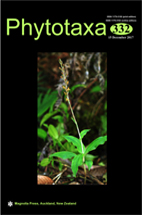Abstract
Habenaria Willd. (1805: 544) is one of the largest genera of terrestrial orchids, with approximately 880 species (Zhang et al. 2015; Kolanowska et al. 2015; Kumar et al. 2016; Govaerts et al. 2017) well represented in both the New and Old World tropics and subtropics, with a few species extending into temperate areas, particularly in eastern Asia (Pridgeon et al. 2001). The main centers of diversity of the genus are in Brazil, southern and central Africa, and East Asia (Kurzweil & Weber 1992; Batista et al. 2006). The generic delimitation of Habenaria is very difficult from a morphological point of view, and many species originally described in the genus have been transferred to other genera in its alliance, and there are also a lot of intermediate species between them (Lang 1998, 1999; Jin et al. 2012). Recent results of molecular phylogenetics indicated that Habenaria is currently defined is polyphyletic and perhaps would be further divided into smaller genera (Bateman et al. 2003; Jin et al. 2014).

